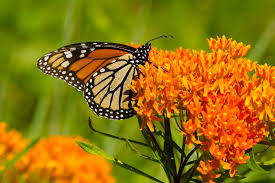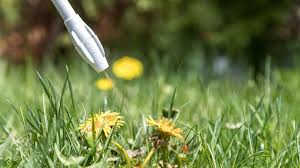Butterfly Weed, Butterfly weed (Asclepias tuberosa) is a striking perennial plant native to North America, known for its vibrant orange flowers and ability to attract pollinators, particularly monarch butterflies. As a member of the milkweed family, it plays a crucial role in the life cycle of monarchs, serving as both a nectar source and a host plant for their larvae. This article explores the many benefits of growing butterfly weed in your garden, its care requirements, and its importance to local ecosystems.
The Appeal of Butterfly Weed
Butterfly weed stands out in the garden with its clusters of bright orange, sometimes yellow or red, flowers that bloom from early summer to early fall. These vivid blooms make it a popular choice for gardeners looking to add a splash of color to their landscapes. Beyond its aesthetic appeal, butterfly weed is prized for its ability to attract pollinators, including bees, butterflies, and hummingbirds. Monarch butterflies are particularly drawn to this plant, as it provides an essential food source for their caterpillars.
Unlike other milkweeds, butterfly weed does not have milky sap, making it easier to handle for those concerned about skin irritation. Its foliage is dark green and lance-shaped, providing an attractive contrast to the fiery blooms.
Growing Butterfly Weed
Butterfly weed is relatively easy to grow, making it an excellent choice for both novice and experienced gardeners. It thrives in well-drained soil and prefers full sun, though it can tolerate partial shade. One of the key advantages of butterfly weed is its drought tolerance; once established, it requires minimal watering, making it a great option for xeriscaping and low-maintenance gardens.
Here are some tips for successfully growing butterfly weed:
- Planting: Butterfly weed can be grown from seeds or transplants. If starting from seed, it’s best to sow them in the fall or early spring. Germination can be slow, so be patient. If planting transplants, space them about 18 to 24 inches apart.
- Soil: Well-drained soil is essential for butterfly weed. It can tolerate poor soils, including sandy or rocky conditions, but it does not thrive in heavy, clay soils.
- Watering: Water young plants regularly until they are established. Once mature, butterfly weed is drought-tolerant and requires minimal watering.
- Pruning: Deadheading the spent flowers can encourage more blooms, though it is not necessary for the plant’s health. Cutting back the stems in late fall or early spring helps maintain a tidy appearance.
- Pests and Diseases: Butterfly weed is generally resistant to pests and diseases. However, aphids may occasionally appear, particularly the orange-colored oleander aphid. These can usually be controlled with insecticidal soap or by attracting beneficial insects such as ladybugs.
Ecological Importance
Butterfly weed is more than just a beautiful garden plant; it plays a vital role in supporting pollinators. Monarch butterflies, whose populations have been declining due to habitat loss and pesticide use, rely on milkweed species, including butterfly weed, for survival. The monarch caterpillars feed exclusively on milkweed plants, absorbing toxins from the leaves that provide them with a defense against predators.
In addition to monarchs, butterfly weed also supports other pollinators. Bees and hummingbirds are frequent visitors, helping to pollinate the plant and other nearby flowers. By planting butterfly weed, gardeners can contribute to the conservation of these important species and help maintain a healthy and diverse ecosystem.
Conclusion
Butterfly weed is a versatile and valuable addition to any garden. Its vibrant flowers, low maintenance requirements, and ecological benefits make it a popular choice for gardeners looking to attract pollinators and support native wildlife. By planting butterfly weed, you can enjoy the beauty of this striking plant while also making a positive impact on your local environment. Whether you’re looking to create a pollinator-friendly garden or simply want to add a pop of color to your landscape, butterfly weed is an excellent choice.
You Might Also Like These:
can you overdose on horny goat weed



